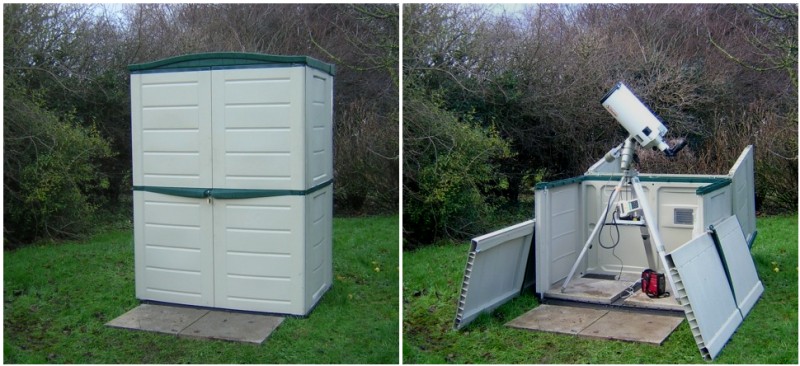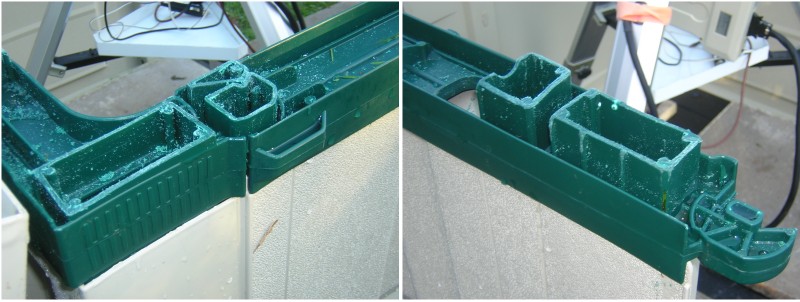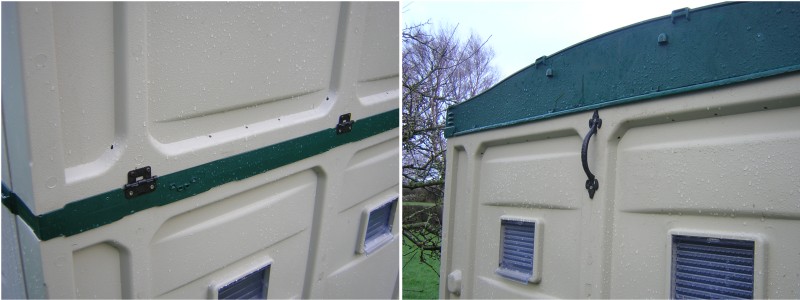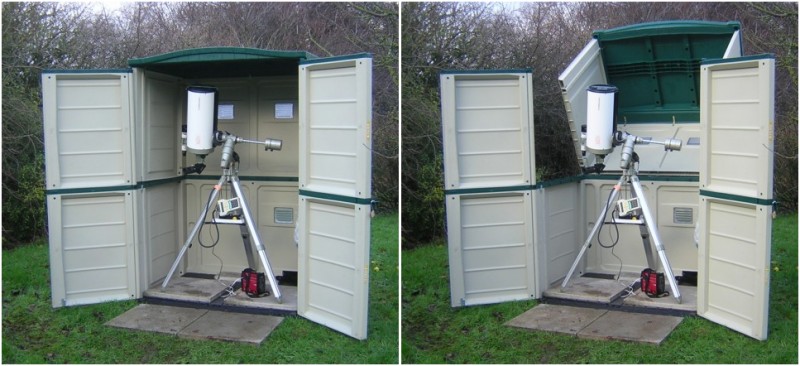|
The observatory was built in early 2007 and is based on a Keter Extend-a-Shed XL (Unfortunately only the Jumbo XL is currently available in the UK but the observatory can be built from this leaving several panels left over.) The shed has been modified so the top hinges open. The doors are then be lifted off to give the telescope full access to the sky. This can be done by one person and in a couple of minutes the telescope is ready for use. Click on the picture above for a video of this process (1.5Mb Windows Media Player) Note that access to scope with this design is rather restricted for visual use but this is not a problem in this case as observations are made using electronic imaging and instrumentation. |
|
CONSTRUCTION |
|
|
|
The shed was first constructed according to the manufacturer's instructions. The top panels and roof were then fixed together with metal straps. These allowed the top half to be removed without the panels coming apart. Over centre clips were fitted, near the front, between the top and bottom halves to lock the top in position when closed. |
|
|
|
The top was removed and the lugs on the bottom section which lock the two halves together were cut shorter to allow the top to clear them when swinging open. (The back lugs close to the hinge needed to be cut lower than those at the front). The remaining part of the lugs, together with the hinge and clips still maintain the integrity of the shed when closed. |
|
|
|
Hinges were fixed along the back edge between the top and bottom sections (I used lift off hinges so that the top section can be removed completely if required, though the top is rather unwieldy for one person to put back on the hinges without assistance) Handles were fitted to the back and roof of the top section to hold onto when opening and closing the top |
|
|
|
To open the observatory, the doors are first opened fully. This (fortunately!) gives just enough clearance for the top to swing up clear of the doors. To clear the sides of the observatory when closed, the scope is parked in a specific home position (stored in the "land objects" of the Skysensor 2000 memory) |
CLICK HERE FOR UPDATES & CURRENT EQUIPMENT




